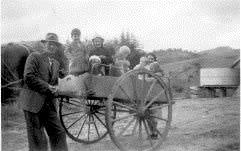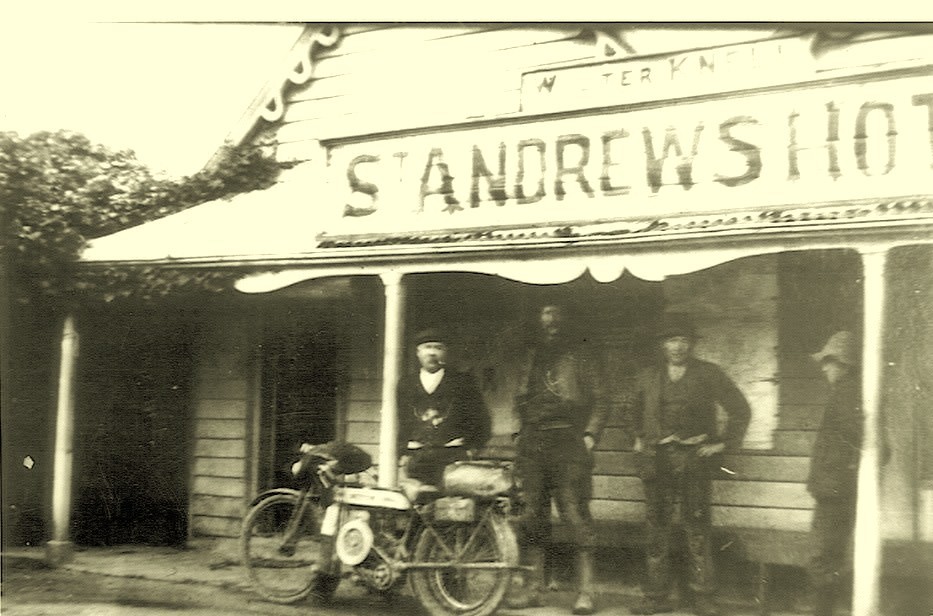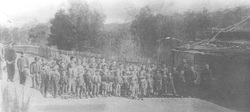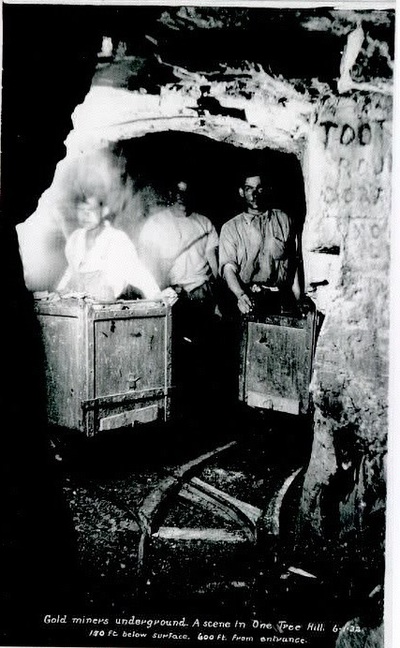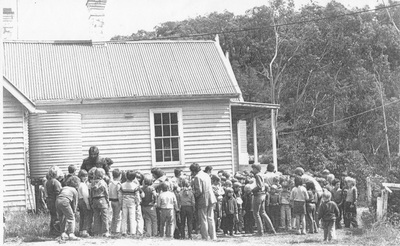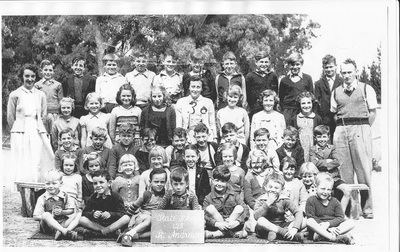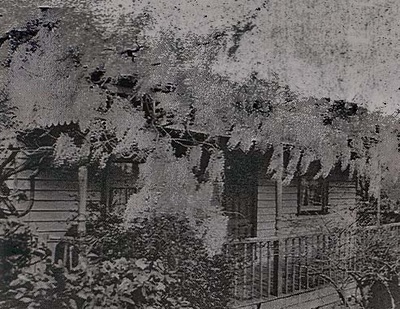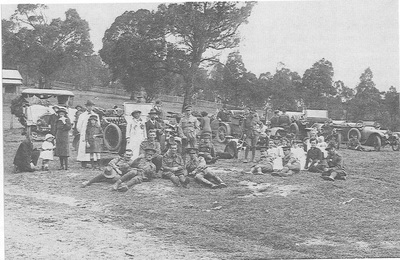St Andrews/Queenstown Historical Society
ABOUT US
The St Andrews/Queenstown Historical Society formed in 1998 and it’s aims in the early years were to collect and share history of the St Andrews District through photographs, media print and oral translation.
Presently our aims and objectives have not altered but our research methods are greatly enhanced with computer technology and GOOGLE.
We also attend network meetings with Yarra Plenty Heritage Group and we have strong connections with Nillumbik Shire who has financially supported us since 1999.
Meeting dates are every second month on a Saturday morning at 9.30am; **currently due to Covid-19 restrictions we are not meeting.
Contact President - Helen Kenney on 9710 1519 or kenney10@bigpond.com
Secretary - Gaye Ponting flygaye@hotmail.com
Single Membership is $12 p/a
Family membership is $15p/a
The St Andrews/Queenstown Historical Society formed in 1998 and it’s aims in the early years were to collect and share history of the St Andrews District through photographs, media print and oral translation.
Presently our aims and objectives have not altered but our research methods are greatly enhanced with computer technology and GOOGLE.
We also attend network meetings with Yarra Plenty Heritage Group and we have strong connections with Nillumbik Shire who has financially supported us since 1999.
Meeting dates are every second month on a Saturday morning at 9.30am; **currently due to Covid-19 restrictions we are not meeting.
Contact President - Helen Kenney on 9710 1519 or kenney10@bigpond.com
Secretary - Gaye Ponting flygaye@hotmail.com
Single Membership is $12 p/a
Family membership is $15p/a
Historical Information
The first people who moved across this land were the aboriginal people, known as the ‘Wurrundjeri’.
They had the ability to adapt to living from the land and its seasons over thousands of years. In 1835 the ‘township’ of Melbourne was claimed by Europeans and 40,000 years of living stopped for the Wurrundjeri. A window into their life and how they existed is through the native bush and animals that are still present in the district today.
They had the ability to adapt to living from the land and its seasons over thousands of years. In 1835 the ‘township’ of Melbourne was claimed by Europeans and 40,000 years of living stopped for the Wurrundjeri. A window into their life and how they existed is through the native bush and animals that are still present in the district today.
GoldEuropean settlement began in this district in late 1853- 1854 with the discovery of gold in Spanish Gully in Smiths Gully by George Boston and his party. The first gold was discovered in Warrandyte in 1851. The area from Warrandyte to Queenstown was known as the Caledonian Diggings and it was part of the St Andrews Mining Division.
Within months of this discovery, a mining village at the rush to Caledonia was known as Market Square – opposite Queenstown Cemetery. Gold was being extracted from One Tree Hill and in any gully and creeks in the surrounding area. Some interesting names of mining claims, reefs and companies – Old Boomer, New Boomer, Perseverance, The Late Hustlers, Eureka, Welcome Reef, Lancashire hero, Slaughter Yard Rush and Never-Too- Late-to-Mend! In 1864, 45 reefs were totally abandoned. By 1890 records show nearly 25,000 ozs of gold were extracted as quartz reefs – Yow Yow 7,500, One Tree Hill 7,500, and Panton Hill – Orams reef – 9000 ozs. |
OrchardsAs the gold ran out, some families – The Ninks, Mullers, Sabelbergs,Cant, Dugdale, Mittons - stayed and turned their talent into farming their land, There were many orchards, growing a variety of fruit – apples , pears plums, peaches, quinces raspberries, and strawberries.
The Ninks were known as the Peach kings – grew the best peaches – they use to grow grapes not for the wine but for the leaves. As they would wrap the peaches in an individual leaf, making the presentation of the fruit delectable and thus get a higher price at the market. St Andrews ChurchThe church was built in 1868 – The Dean of Melbourne gave the opening service in 1869. It was reported in the Melbourne church news – It was built on the best site of the township. The following morning a tea meeting was held – the ladies performed their part well and spared no cost or pains in spreading the tables with a most sumptuous repast, to which about 200 sat down.
In the early 1880’s , the minister travelled and gave services in Panton Hill, Christmas Hills, Upper Diamond Creek, Smiths Gully, and Queenstown in later years after St Matthews was opened he no longer attended Panton Hill but made his way up the mountain to Kinglake. In 1889 a parsonage was built over the years this was the residence for the minister and in later years it was a rental property to local families. It gradually fell into disrepair and the Shire had it condemned. It was burnt down by the local CFA as an exercise, in the early 1970’s. |
St Andrews Post Office & HotelIt started in 1856 by W. Watson and sons and was leased out to William Morton and was paid an annual salary of ₤100.
In 1857, John Corke Knell took over – 9 years later he applied for a license for the St Andrews Hotel – which is where it stands today – John died in 1867. His wife Eliza took over running the establishment. In 1869, she remarried Robert Smith. Eliza was also registrar for births deaths and marriages. The hotel and post office remained in Eliza’s family for 60 years. Eliza was a well respected figure in the town. She died in 1911 aged 74 years and she is buried in Queenstown Cemetery. The following comment was made by “Barney” in 1882 –‘ That some people seem to think that the “pub” is a fit and proper place for church, parsonage, school, mechanic’s institute, and all public business.’ Opposite the hotel was the Police Paddocks. The police station was operational in the late 1850’s. The town had one mounted constable and one senior foot constable. The Court of Petty Sessions began in 1861 and serviced the area for thirty years - most cases were of a minor nature – sly grog selling, drunk and disorderly, fining parents for not having their child vaccinated and for not sending them to school. The police station ceased operating in 1917. The police quarters were moved to Doncaster East School in 1920 and were to be used as a teacher’s residence. |
Queenstown State School 128
The school began as Caledonia Diggings in 1858. Allegedly classes were given in a tent and then a hut on the main road on the left before Buttermans track.
In 1882, the new school and residence was built on its current location on the corner of Caledonia Street and School Road – now the Community Centre.
The building was relocated from Smiths Gully. It was originally built in 1876.
In 1984 the new St Andrews School was built in its current location.
The old school became the St Andrews Community Centre in 1983.
In 1882, the new school and residence was built on its current location on the corner of Caledonia Street and School Road – now the Community Centre.
The building was relocated from Smiths Gully. It was originally built in 1876.
In 1984 the new St Andrews School was built in its current location.
The old school became the St Andrews Community Centre in 1983.
Queenstown Cemetery
Download a membership form by clicking on the file below.
| cemetery_flyer_2021_-_complete.pdf | |
| File Size: | 665 kb |
| File Type: | |


